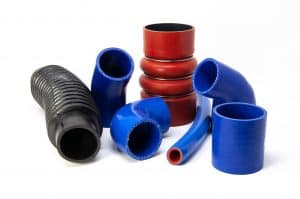What happens when a search for old rubber parts doesn’t deliver results? Engineers have options.
Do you need an industrial rubber product from a supplier that’s no longer in business? Maybe you need a rubber part that’s become obsolete instead. If you can’t get the rubber products that you need, it might be time to reverse-engineer them. Reverse engineering, or back engineering, is the process of reproducing a part such as a gasket based on a detailed examination of its composition and construction.
Reverse engineering may seem straightforward enough, but there’s plenty to think about here. For starters, how much do you really know about the drawing or part sample that you have? Is the information accurate, current, and complete? Let’s take a closer look at what engineers need to ask themselves when it’s time to replace old rubber parts with new sealing solutions.
Do you have a part drawing?
Sometimes, all that an engineer has to work with is a vague drawing or a page from an old catalog. This isn’t optimal, but it’s a start. By partnering with a rubber fabricator who provides design assistance, you may be able to discern additional details. You’ll also need to determine part dimensions and materials of construction. Elastomers like EPDM, neoprene, and polyethylene have different properties – and prices.
Are the callouts current?
Part drawings and old catalog pages may contain callouts that are no longer valid. Some standards are updated more frequently than others, but ones that are decades old are probably out-of-date. With a rubber part from the 1950s, for example, a callout for lead paint won’t meet today’s environmental requirements. Military standards from the analog age don’t account for digital technologies either.
If you have a sample part, what do the tolerances tell you?
Tolerances are allowable variations in physical dimensions. For engineers who are used to working with metal components, it’s important to understand that the tolerances for rubber parts aren’t as tight. With older rubber products, it’s also worth appreciating that a sample part could be at either the high end or the low end of a range of allowable tolerances. Temperature can change a rubber part’s dimensions, too.
Are you willing to pay for reverse engineering and tooling?
Reverse engineering can be expensive if you need to pay an extruder to create custom tooling. That’s why order quantities are so important. If the quantities you need are low, spreading your tooling costs across a small number of gaskets probably isn’t cost-efficient. Even if a vendor supplies the minimum order quantity (MOQ) that you need, the price for extrusions could be too high.
Can you update the part with a standard product?
Fortunately, engineers have options. You could update the part design and use a newer, standard product instead. For example, is there a catalog part that could meet your requirements? If so, you might like to know that Elasto Proxy keeps 700 standard profiles in stock and also provides custom fabrication services. Because we use water jet equipment, there aren’t any tooling costs during cutting either.
Are you ready to proceed?
Now that you’ve asked and answered this series of questions, are you ready to replace old rubber parts from suppliers who are no longer in business? Do you need to source replacements for obsolete parts instead? Either way, you’ll find that Elasto Proxy combines design assistance, help with material selection, and water jet cutting with value-added services that can ease the pain in your supply chain.
Would you like to learn more? Then contact Elasto Proxy.









